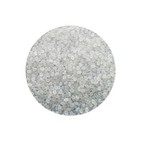HDPE plastic, or high-density polyethylene, is a versatile and durable material widely used in a range of applications, from packaging and construction to automotive and medical applications. It is one of the most commonly used plastics in the world due to its excellent properties and high level of recyclability.
One of the most important advantages of HDPE plastic is its strength and toughness. It has a strong resistance to impact and can withstand high stress and strain levels, making it ideal for use in products that need to withstand tough conditions. It also has a high chemical resistance, which makes it ideal for applications where chemicals are regularly used, such as laboratory equipment.
Another advantage of HDPE plastic is its ability to be easily processed into different shapes and sizes. It can be molded, extruded, or blown into different configurations and is available in a variety of colors and finishes. This makes it an attractive option for a range of products, from toys and containers to piping and fittings.
In addition to its physical properties, HDPE plastic is also highly recyclable. It can be melted down and reused to produce new products, reducing waste and minimizing the environmental impact of production. Recycling HDPE also saves energy compared to producing new plastic, making it an environmentally-friendly option.
However, despite its many benefits, HDPE plastic does have some limitations. It can be susceptible to UV degradation, which can cause it to become brittle over time. It is also not as heat resistant as some other plastics, which limits its use in high-temperature applications.
Overall, HDPE plastic is a highly versatile material that has many advantages. Its strength, toughness, chemical resistance, and recyclability make it an attractive option for a range of products and industries. As with any material, it is important to consider its limitations and ensure it is used in an appropriate way to maximize its benefits.




